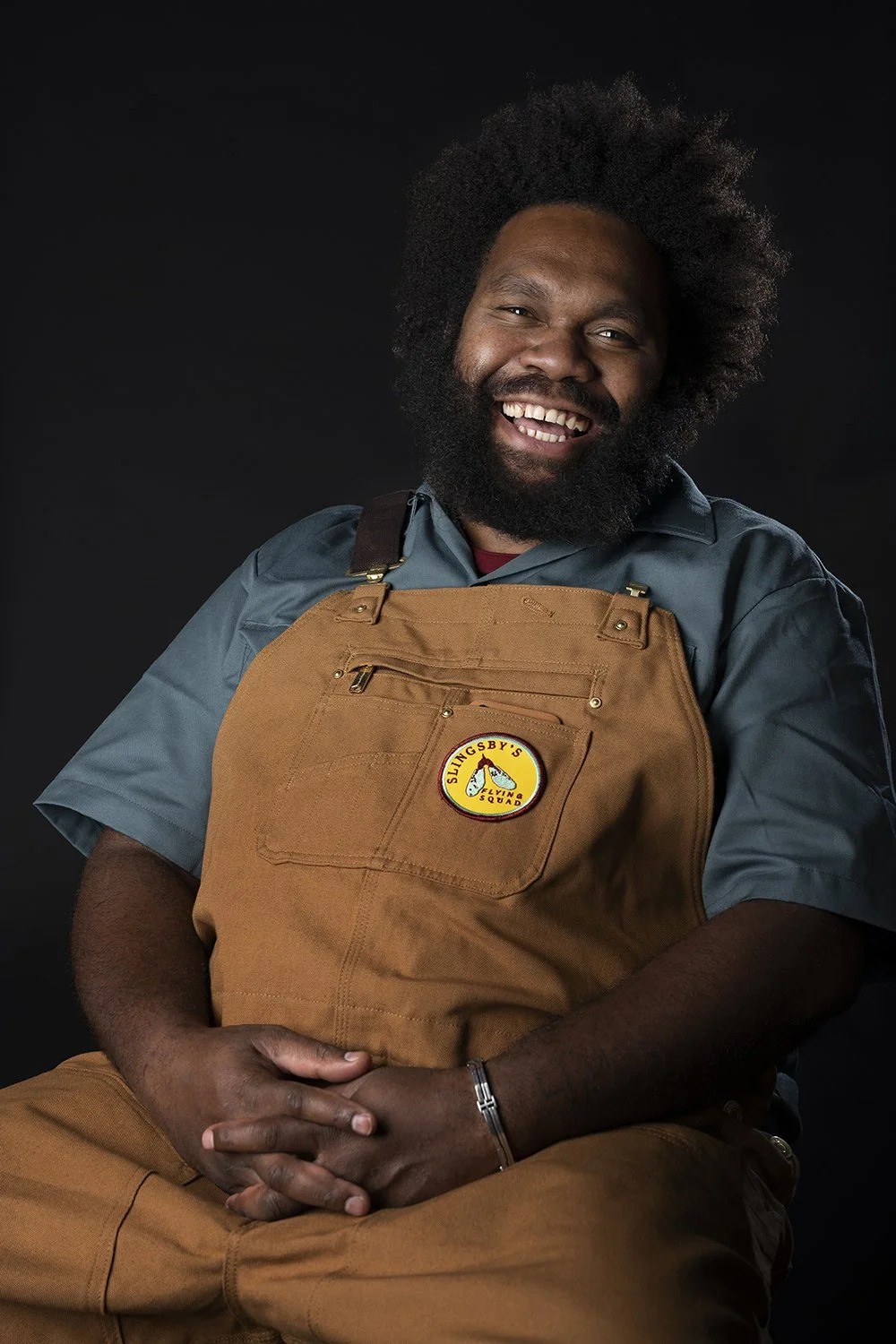The staff portrait. It’s way more than just a snapshot.
Great staff portraiture is a potent tool for your business. The job of staff portraits and corporate headshots is broader than it first appears. Primarily, it’s to connect the identity of the individuals within the business to the business. These images act as branding and create an impression of what type of business you run. They’ll show the breadth of the operation and also offer details that allude to products, processes, facilities and locations. How the photographs are lit, styled and posed expresses approachability, skill set and status.
Staff portraiture presents a rare opportunity not possible with a face-to-face introduction. In-person introductions don't always go to plan. It’s easy to succumb to the pressure of wanting to make a good impression, especially if it’s someone whose work you want to win. Anything can happen: a fumbled handshake, immediately forgetting details or getting someone's name wrong. It’s very possible to make a poor first impression even deep into your career.
The power of staff portraiture and headshots is that you have control over every aspect of the finished image. You can basically construct a two-dimensional first impression. An image that shows you in a way that fits your message and includes a backstory.
The placement of a person within an environment provides a wealth of context. If someone is photographed on a white backdrop, it could suggest that their primary connections in business will be interpersonal, like law or accounting. If someone is photographed in a factory, kitchen or workshop, it would suggest that they have a level of expertise within a specific field. Place someone behind a majestic mahogany desk in a lushly appointed office overlooking the city, and you present someone who has control of the business.
Importantly, all of the photographs on your website and marketing must look like it was shot at the same time. Either in the same environment or thematically and stylistically connected. A cohesive body of photos will act as branding for your business. Photography that isn’t cohesive sends a message too…but probably not the one you want. I believe it’s best to only share photographs that truly serve your business. Less is more.
The lighting in the photograph is another powerful contributor to the tone of the storytelling. How a person is lit will create a range of feelings in an image, from powerful to inviting and caring. For drama, you could use a moody single side light that offers very little detail and strong shadows. This can suggest a level of prowess that might be a good fit for an author or an athlete, but would be incongruous for someone in a service industry, like childcare or nursing. If the person is evenly lit, it presents a level of invitation and safety in the messaging. Light and airy equals approachable.
The impression that the images need to convey is important, as these photos are intended to draw your target audience towards your business. Depending on how the images affect people, they will either aspire to be like you, want to associate with you or find you uninteresting. You’ll have to have their attention to be able to communicate with them, so the photos need to have the right ingredients to draw the right people’s attention. Once you are communicating with your target audience, you can tell your story and hopefully build interest and trust. Similar to the connection we feel when meeting someone in person, these images help build an affinity with your business so people will trust you with their money.
Virtually without exception, these photos should portray a warm welcome from a confident and kind-looking person. I've seen photos that portrayed the people in a business as looking tough and edgy. This might work to attract people to see a movie, but I can't see it as a way to welcome people into your business. One of my major objectives is to get a photograph of my subject with a genuinely open expression. Our impulse to a real smile is to smile back. If a photograph makes you smile, it works. These images have nothing to do with beauty standards and everything to do with sharing a real sense of the character of the person in front of me.
Capturing a great portrait is a highly specialised process; equal parts distraction, entertainment and the technical aspects of photography. Contrary to the popular narrative, you should come away from getting your photo taken, having enjoyed the experience.
Yes, you read that right!
It’s important to me that the people I’m photographing are having a good time. The highlight of the shoot should be the conversation that's going on, with little to no focus on the camera and lights. I can’t manufacture an open expression, but I can elicit one. It's my job to create an experience where people enjoy engaging with me so I can document them being them.
I feel that having really well-crafted staff photos and headshots is an underappreciated resource. People can glean a great deal of information from these photographs, and they may well be the impetus for them to deal with your business. A body of consistent and welcoming photographs of your staff is an asset that is definitely worth investing in.




